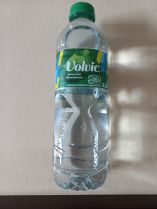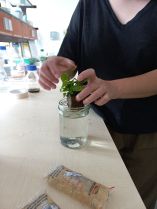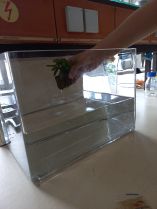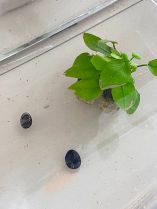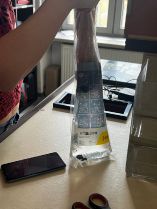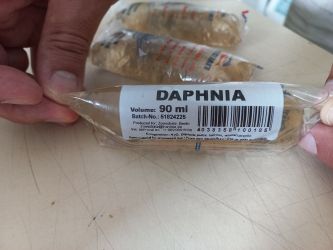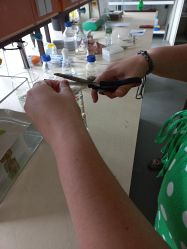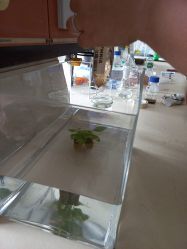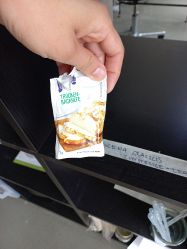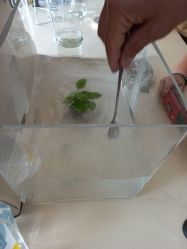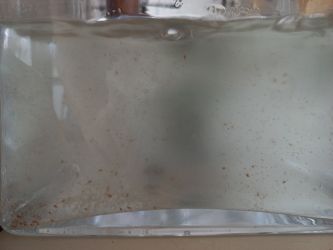Melisaaslan (talk | contribs) mNo edit summary |
Melisaaslan (talk | contribs) No edit summary |
||
| Line 1: | Line 1: | ||
[[File:Daphnia Pulex .jpg|thumb|225x225px|'''Image 1.''' Daphnia Pulex, [https://animaldiversity.org/accounts/Daphnia_pulex/pictures/collections/contributors/Grzimek_inverts/Cladocera/Daphnia_pulex/ Image Resource]]] | [[File:Daphnia Pulex .jpg|thumb|225x225px|'''Image 1.''' Daphnia Pulex, [https://animaldiversity.org/accounts/Daphnia_pulex/pictures/collections/contributors/Grzimek_inverts/Cladocera/Daphnia_pulex/ Image Resource]]] | ||
'''''Daphnia pulex'',''' although often called water fleas, are freshwater crustaceans closely related to shrimp. Daphnia, the most common microscopic crustacean, can be visible to the naked eye, with lengths ranging from 0.2–5 mm. Their reproduction alternates between asexual and sexual reproduction, with females laying eggs during the warmer season and males only being produced during stressed conditions, such as overcrowding or cold temperatures. | '''''Daphnia pulex'',''' although often called water fleas, are freshwater crustaceans closely related to shrimp. Daphnia, the most common microscopic crustacean, can be visible to the naked eye, with lengths ranging from 0.2–5 mm. Their reproduction alternates between asexual and sexual reproduction, with females laying eggs during the warmer season and males only being produced during stressed conditions, such as overcrowding or cold temperatures. | ||
| Line 15: | Line 13: | ||
Also, the water temperature must be between '''18°C to 25°C''', therefore, the tank was placed in the daylight in the lab to provide sufficient conditions. | Also, the water temperature must be between '''18°C to 25°C''', therefore, the tank was placed in the daylight in the lab to provide sufficient conditions. | ||
[[File:Daphnia 9.jpg|frameless| | [[File:Daphnia 9.jpg|frameless|210x210px]] [[File:Daphnia 8.jpg|frameless|210x210px]] [[File:Daphnia 5.jpg|frameless|210x210px]] [[File:Snails.jpg|frameless|210x210px]] [[File:Daphnia 11.jpg|frameless|210x210px]] | ||
=== 2. Introducing the Culture === | === 2. Introducing the Culture === | ||
| Line 23: | Line 21: | ||
=== 3. Feeding the Daphnia === | === 3. Feeding the Daphnia === | ||
2-3 small pinch of '''baker’s yeast''' was dissolved in water. Afterwards the water started to get cloudy. | 2-3 small pinch of '''baker’s yeast''' was dissolved in water. Afterwards the water started to get cloudy. | ||
[[File:Yeast Daphnia.jpg|frameless|250x250px]] [[File:Daphnia 2.jpg|frameless|250x250px]] [[File:Daphnia 1.jpg|frameless|333x333px]] | [[File:Yeast Daphnia.jpg|frameless|250x250px]] [[File:Daphnia 2.jpg|frameless|250x250px]] [[File:Daphnia 1.jpg|frameless|333x333px]] | ||
The culture was fed in every 1-2 days. | |||
=== 4.Troubleshooting === | |||
Unfourtanetly, the amount of the yeast caused the overfeeding for fleas. For the further process the amount of it must be less than before and the water clarity should be take into consediration to avoid overfeeding. | |||
Revision as of 17:35, 20 September 2024
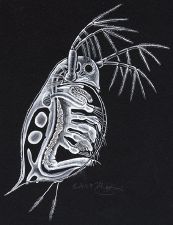
Daphnia pulex, although often called water fleas, are freshwater crustaceans closely related to shrimp. Daphnia, the most common microscopic crustacean, can be visible to the naked eye, with lengths ranging from 0.2–5 mm. Their reproduction alternates between asexual and sexual reproduction, with females laying eggs during the warmer season and males only being produced during stressed conditions, such as overcrowding or cold temperatures.
Daphnia are metazoan organisms, like nematodes, bristle worms, and tardigrades. Metazoa feeds on algae and bacteria, and algae- and bacteria-consuming protozoa like amoeba, flagellates, and ciliates. Protozoa control the bacterial population and pathogens, cycle nutrients, and improve water clarity. Metazoa keeps protozoa and bacterial populations in check.
1. Setting Up the Aquarium
A small aquarium was used to contain the daphnia.
For the water requirement, 1.5L Volvic brand mineral water was used to maintain the pH between 6.5 and 8.5. Since Daphnia are sensitive to chlorine, the water must be dechlorinated water.
The water plant and the snails were placed to regulate the oxygen inside the water and to filter.
Also, the water temperature must be between 18°C to 25°C, therefore, the tank was placed in the daylight in the lab to provide sufficient conditions.
2. Introducing the Culture
3x90 ml Daphnia culture was introduced to the tank.
3. Feeding the Daphnia
2-3 small pinch of baker’s yeast was dissolved in water. Afterwards the water started to get cloudy.
The culture was fed in every 1-2 days.
4.Troubleshooting
Unfourtanetly, the amount of the yeast caused the overfeeding for fleas. For the further process the amount of it must be less than before and the water clarity should be take into consediration to avoid overfeeding.
Documentation by Melisa Aslan
References
Daphnia pulex. (n.d.-b). Retrieved on 06.09.2024 from https://cfb.unh.edu/cfbkey/html/Organisms/CCladocera/FDaphnidae/GDaphnia/Daphnia_pulex/daphniapulex.html
Hill, P. (2022, August 17). Lagoon Water fleas as indicator organisms: About Daphnia | Triplepoint Environmental. Triplepoint Environmental. Retrieved on 06.09.2024 from https://lagoons.com/blog/algae/lagoon-water-fleas/
Wikipedia. (2023, December 3). Daphnia pulex. Retrieved on 06.09.2024 from https://en.wikipedia.org/wiki/Daphnia_pulex
